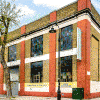Gentrification: a fate worse than demolition for buildings at risk? – words Al Woods
Earlier in the summer, heritage building charity SAVE released its latest Up My Street catalogue, listing neglected buildings around the UK in need of new owners.
The list included many quirky and notable properties, such as a Victorian hospital, a grand manor house, and a hastily-assembled 18th-century shack, built to help a squatter claim ownership of some land.
All of these buildings have their own intrinsic value, and saving them will help preserve our country’s heritage. But as the Guardian reports, it will take some very brave buyers indeed to take on these crumbling and at-risk properties.
Increasingly, though, developers, renovation services, apartment renovation contractors and business owners have been buying up listed buildings in need of restoration for sale. They then transform them into high end apartments or swanky restaurants. To local residents, this often appears to be the worst form of gentrification.
So what’s best for these buildings at risk? If saving them turns them into local pariahs, are they better off being left to crumble?
The dark side of building renovation
Deptford in Lewisham is one of the most poverty-stricken areas in London, so when the coalition government closed its local job centre, it hit local residents hard. The former job centre building was bought by the Antic Collective and turned into a high end pub named Job Centre. The new owners say the pub’s name and theme was inspired by the building’s “function as a place that once served the unemployed.”
This naming decision has been criticised as in poor taste. Local residents fought a hard campaign to keep the original job centre open. This new job centre-themed establishment makes a mockery of their struggle.
Reopening an old building as a pub and naming it after the purpose it once served is nothing new. The hospital in Save’s recent catalogue was once opened as a pub called The Hospital before being closed and abandoned once again. But Job Centre is a particularly inappropriate follower of this tradition.
It’s not just the UK that has seen an increase in old buildings being reopened as pubs and restaurants. So many restaurants are springing up as part of gentrification in Montreal that the government has had to make a law banning new restaurants from opening up within 30 metres of old ones.
Doing nothing will not stop gentrification
If “saving” these buildings can often help speed up the locally unpopular and harmful process of gentrification, it might be better to leave them well alone. There are disadvantages to this approach too. Buildings left unoccupied for long periods of time can often fall victim to vandals or squatters. Some landlords have found ways to get around this, such as by increasing security measures or having property guardians take up residence. As Oaksure puts it, property guardians “provide regular security patrols of the property in virtue of the fact that they live there and travel around the inside and outside of the building while they are going about their business.”
Property guardians may protect buildings against crimes, but listed buildings in particular are often particularly prone to fires and structural collapses due to their age and construction techniques. This also puts off potential buyers. To help owners prepare for these events, organisations like the Listed Property Owners’ Club have been set up to offer advice on listed property insurance and other complex but crucial protective measures.
There is another downside to leaving a building well alone, and that is that it may be demolished to make way for a gentrifying development anyway. Take the Woodberry Down council estate in Hackney. The social houses were not pretty—famously they were used to portray the Warsaw ghetto Schindler’s List—but they were not decrepit either. That didn’t stop development firm Berkeley Homes from tearing many of them down and replacing them with expensive flats for the private sector. Social housing tenants who used to live in these properties were relocated, sometimes far away from their families.
With seemingly every older building at risk of gentrification, the only solution is to find a way to renovate properties without driving out longtime locals.
The right way to save neglected buildings
At the moment, experts from every field are still getting to grips with the implications of gentrification and how to combat it. This means there is no consensus over how to regenerate areas whilst avoiding the pitfalls of gentrification. Some ideas have been raised, however.
Speaking specifically about California, academics Daniel Shoag and Peter Ganong suggested building more new properties could drive the cost of living down through simple supply and demand economics. This approach would do little to address the problems with neglected buildings or the issues with social housing.
A better approach might be to ensure all new buildings come with affordable housing programs, and that valuable local institutions like job centres or hospitals are protected by the government.
As long as safeguards like these are in place before renovation begins, it won’t have to be a choice between gentrification or demolition for buildings at risk. Instead, these buildings can be saved.
Gentrification: a fate worse than demolition for buildings at risk? – words Al Woods









